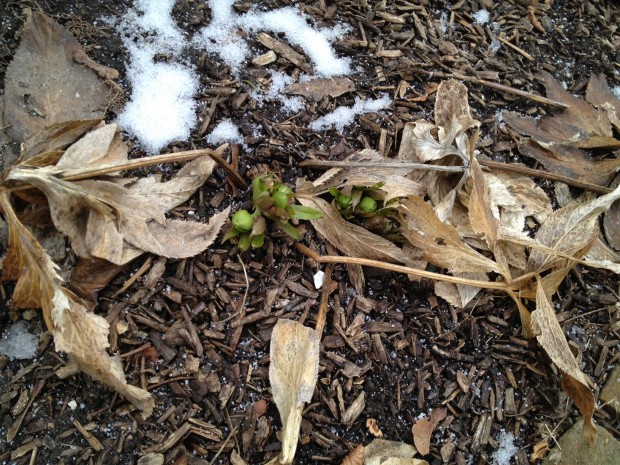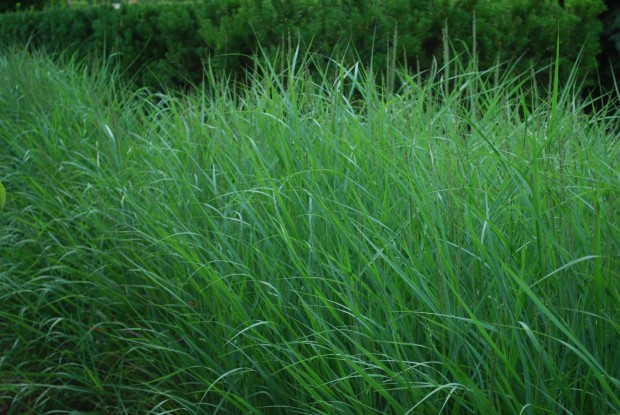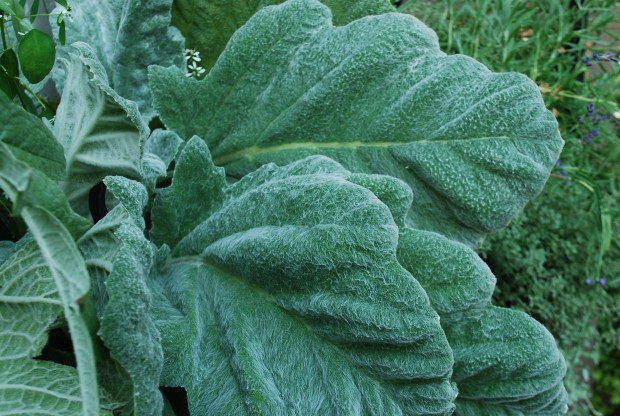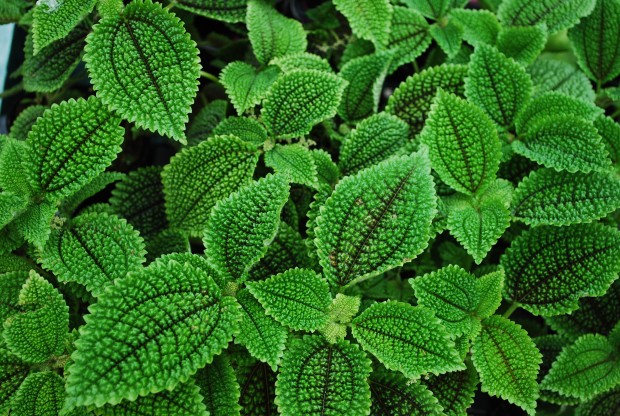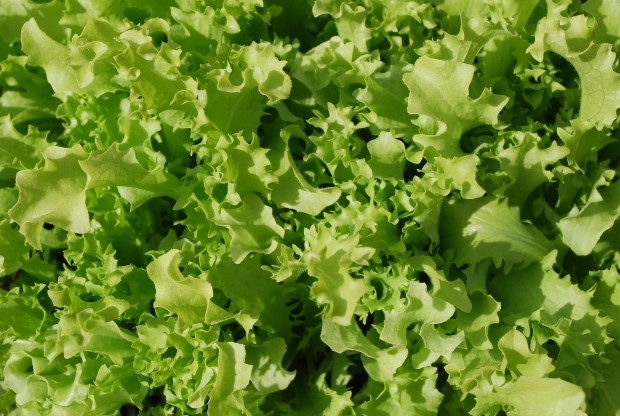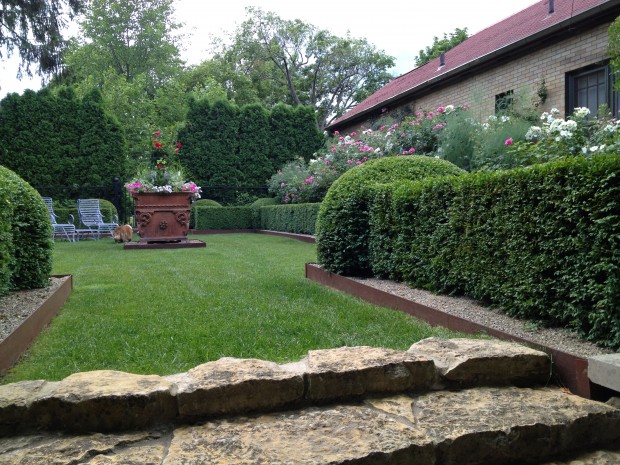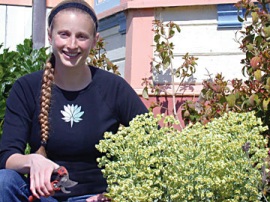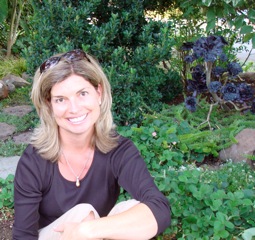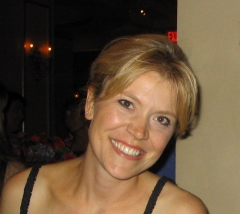 Transitions broadly refer to change. A change in status, as in child to teenager. as in working person to retiree. As in winter into spring. The moment in the garden which is neither winter nor spring, neither summer nor fall, neither fall nor winter-these are transitory periods. Change of any kind implies challenge and uncertainty. As a designer, I am routinely asked to address the change from one level to another. If you have ever climbed a steep set of stairs, you know how much effort is involved to make the transition from one level to another.
Transitions broadly refer to change. A change in status, as in child to teenager. as in working person to retiree. As in winter into spring. The moment in the garden which is neither winter nor spring, neither summer nor fall, neither fall nor winter-these are transitory periods. Change of any kind implies challenge and uncertainty. As a designer, I am routinely asked to address the change from one level to another. If you have ever climbed a steep set of stairs, you know how much effort is involved to make the transition from one level to another.
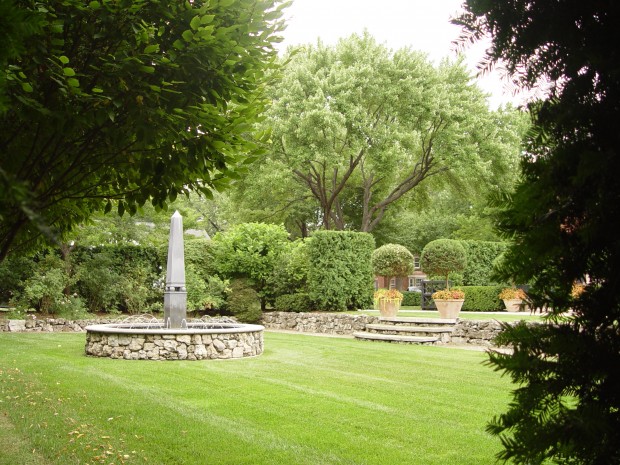 A beginning college course in calculus is just that-a beginning. Advancing from one level of proficiency to the next is greatly helped by a friendly transition process. The effort it takes to move to the next level-considerable. Steps in the landscape were invented to make that transitory experience as easy and as interesting as possible. When I am in New York, and zooming up an elevator, I wish for a transition from the first floor to the 28th floor with some grace and style.
A beginning college course in calculus is just that-a beginning. Advancing from one level of proficiency to the next is greatly helped by a friendly transition process. The effort it takes to move to the next level-considerable. Steps in the landscape were invented to make that transitory experience as easy and as interesting as possible. When I am in New York, and zooming up an elevator, I wish for a transition from the first floor to the 28th floor with some grace and style.
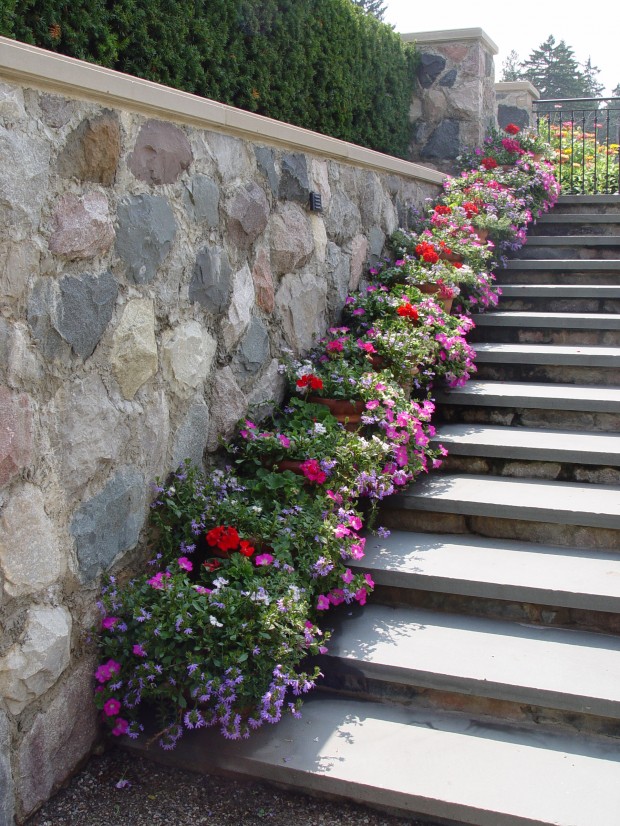 Sometimes long flights of steps from one level to another are unavoidable. I try to make that trip as visually interesting as possible. This makes the transition from one level to another an experience-not a chore.
Sometimes long flights of steps from one level to another are unavoidable. I try to make that trip as visually interesting as possible. This makes the transition from one level to another an experience-not a chore.
 The transition from the public landscape to the private and personal landscape can be brief and substantial-as in a wall. A hedge. A gate.
The transition from the public landscape to the private and personal landscape can be brief and substantial-as in a wall. A hedge. A gate.
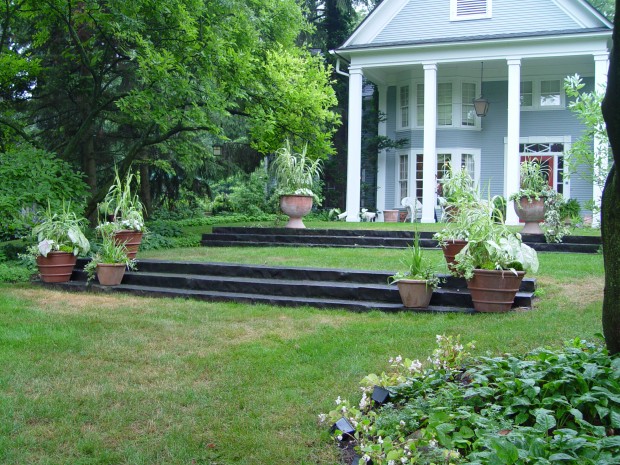 A subtle transition in grade can be dealt with in a number of ways. Short flights of steps endow a long and gently ramped soil, with a little lively punctuation.
A subtle transition in grade can be dealt with in a number of ways. Short flights of steps endow a long and gently ramped soil, with a little lively punctuation.
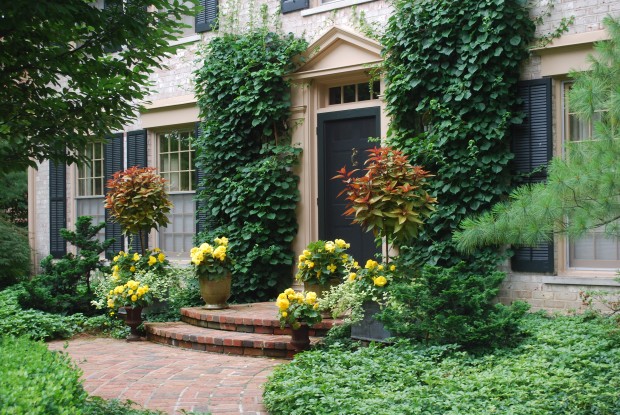
The walk to the front porch is traveled by good friends, family, and UPS. The front porch-a formal transitional space that gives friends, family, and delivery people a moment to collect themselves. A little time to compose themselves. A little time to shed the cares of the day, and focus on the moment. I like big wide and ample porches.
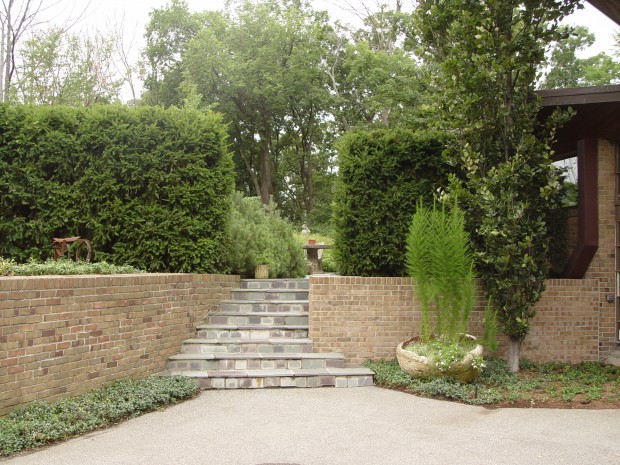
Any transition from one level to another asks for an inventive solution. An invitation to move from one place to another-both physically and emotionally. The time it takes to make a change from one place to another-transitions in the landscape need to be big and generous. Transit implies a movement from one space to another. That transit space needs as much patience as any other space in the landscape.
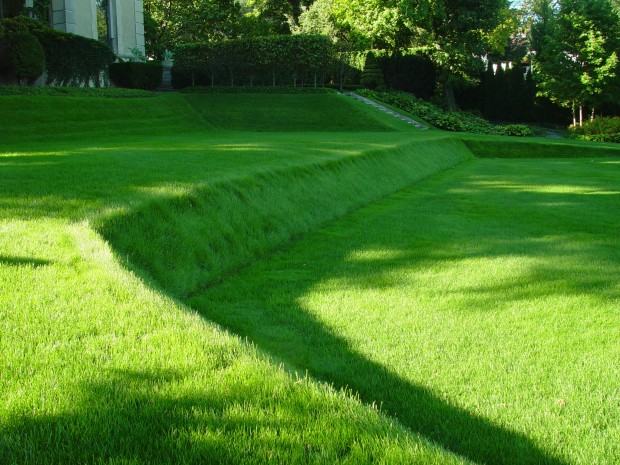
A steep slope is not so friendly to people. Some slopes can be addressed with steps. Some slopes can be addressed with soil graded into tiers, and grassed. Any transition in the landscape needs to be addressed thoughtfully. Imagine yourself at that transitional moment. Design with that moment in mind.
I am keen to read what other members of the roundtable have to say about transitions-please join in!
Jocelyn Chilvers : The Art Garden : Denver, CO
Scott Hokunson : Blue Heron Landscapes : Granby, CT
Mary Gallagher Gray : Black Walnut Dispatch : Washington, D.C.
Debbie Roberts : A Garden of Possibilities : Stamford, CT
David Cristiani : The Desert Edge : Albuquerque, NM
Jenny Peterson : J Petersen Garden Design : Austin, TX



